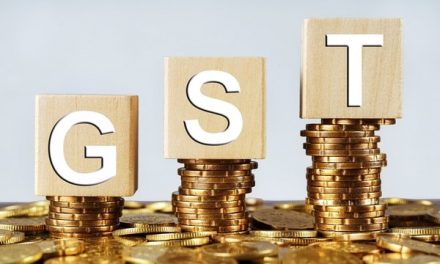Are you running your business? or you want to start your business. No Matter whether you are the part of your small or Big business, ‘You must be thinking of to run your business legally and according to the government legal process. Almost every business comes under the GST (depend on their Annual income). Those who want to do online business with e-Commerce platforms such as Amazon, Flipkart, Snapdeal Paytm and more. they must have GST Number. Now the question is New businesses are anxious about these technical process (GST). However, there are a number of Online GST Registration Compay which assist the businesses to register under the GST. But for now, through this article, we will be knowing all kinds of information related to GST: How to GST, Registration, what is GST, Importance, simple way to register your business, What if the business or service not fall under the GST.
CLICK HERE TO REGISTER FOR GST
Firstly Let’s begin with, What is GST Registration:
In the GST Regime, businesses whose turnover exceeds Rs. 40 lakhs* (Rs 10 lakhs for NE and hill states) is required to register as a normal taxable person. This process of registration is called GST registration.
For certain businesses, registration under GST is mandatory. If the organization carries on business without registering under GST, it will be an offense under GST and heavy penalties will apply.
GST registration usually takes between 2-6 working days. We’ll help you to register for GST in 3 easy steps.
*CBIC has notified the increase in threshold turnover from Rs 20 lakhs to Rs 40 lakhs. The notification will come into effect from 1st April 2019.
Who Should Register for GST?
- Individuals registered under the Pre-GST law (i.e., Excise, VAT, Service Tax, etc.)
- Businesses with turnover above the threshold limit of Rs. 40 Lakhs* (Rs. 10 Lakhs for North-Eastern States, J&K, Himachal Pradesh and Uttarakhand)
- Casual taxable person / Non-Resident taxable person
- Agents of a supplier & Input service distributor
- Those paying tax under the reverse charge mechanism
- Person who supplies via e-commerce aggregator
- Every e-commerce aggregator
- Person supplying online information and database access or retrieval services from a place outside India to a person in India, other than a registered taxable person
- *CBIC has notified the increase in threshold turnover from Rs 20 lakhs to Rs 40 lakhs. The notification will come into effect from 1st April 2019.
WANT TO DO GST REGISTRATION @ DISCOUNTED RATES?
.Documents Required for GST Registration
- PAN of the Applicant
- Aadhaar card
- Proof of business registration or Incorporation certificate
- Identity and Address proof of Promoters/Director with Photographs
- Address proof of the place of business
- Bank Account statement/Cancelled cheque
- Digital Signature
- Letter of Authorization/Board Resolution for Authorized Signatory
What is GST Registration Process?
The Goods And Services Tax (GST) Registration services at ClearTax helps you to get your business GST registered and obtain your GSTIN.
ClearTax GST experts will guide you on the applicability and compliances under GST for your business and get your business registered under GST.
.
GST Registration Fees
GST Registration is a tedious 11 step process which involves submission of many business details and scanned documents. You can opt for ClearTax Goods And Services Tax (GST) Registration services where a GST Expert will assist you, end to end with GST Registration.
How to File GST Returns Online?
From manufacturers and suppliers to dealers and consumers, all taxpayers have to file their tax returns with the GST department every year. Under the new GST regime, filing tax returns has become automated. GST returns can be filed online using the software or apps provided by Goods and Service Tax Network (GSTN) which will auto-populate the details on each GSTR forms. Listed below are the steps for filing GST returns online:
- Visit the GST portal (www.gst.gov.in).
- A 15-digit GST identification number will be issued based on your state code and PAN number.
- Upload invoices on the GST portal or the software. An invoice reference number will be issued against each invoice.
- After uploading invoices, outward return, inward return, and cumulative monthly return have to be filed online. If there are any errors, you have the option to correct it and refile the returns.
- File the outward supply returns in GSTR-1 form through the information section at the GST Common Portal (GSTN) on or before 10th of the following month.
- Details of outward supplies furnished by the supplier will be made available in GSTR-2A to the recipient.
- Recipient has to verify, validate, and modify the details of outward supplies, and also file details of credit or debit notes.
- Recipient has to furnish the details of inward supplies of taxable goods and services in GSTR-2 form.
- The supplier can either accept or reject the modifications of the details of inward supplies made available by the recipient in GSTR-1A.
Different Types of Returns applicable under the new GST Law
| Return form | Who should file the return and what should be filed? | Due date for filing returns |
|---|---|---|
| GSTR-1 | Registered taxable supplier should file details of outward supplies of taxable goods and services as effected. | 10th of the subsequent month. |
| GSTR-2 | Registered taxable recipient should file details of inward supplies of taxable goods and services claiming input tax credit. | 15th of the subsequent month. |
| GSTR-3 | Registered taxable person should file monthly return on the basis of finalization of details of outward supplies and inward supplies plus the payment of amount of tax. | 20th of the subsequent month. |
| GSTR-4 | Composition supplier should file quarterly return. | 18th of the month succeeding quarter. |
| GSTR-5 | Return for non-resident taxable person. | 20th of the subsequent month. |
| GSTR-6 | Return for input service distributor. | 13th of the subsequent month. |
| GSTR-7 | Return for authorities carrying out tax deduction at source. | 10th of the subsequent month. |
| GSTR-8 | E-commerce operator or tax collector should file details of supplies effected and the amount of tax collected. | 10th of the subsequent month. |
| GSTR-9 | Registered taxable person should file annual return. | 31 December of the next fiscal year. |
| GSTR-10 | Taxable person whose registration has been cancelled or surrendered should file final return. | Within 3 months of date of cancellation or date of cancellation order, whichever is later. |
| GSTR-11 | Person having UIN claiming refund should file details of inward supplies. | 28th of the month, following the month for which the statement was filed. |
Various kinds of GST return Forms
GST return can be filed using different forms depending on the type of transaction and registration of the taxpayer. Return forms for normal taxpayers are:
GSTR-1
GSTR-1 return form has to be filed by a registered taxable supplier with details of the outward supplies of goods and services. This form is filled by the supplier. The buyer has to validate the auto-populated purchase information on the form and make modifications if required. The form will contain the following details:
- Business name, period for which the return is filed, Goods and Services Taxpayer Identification Number (GSTIN).
- Invoices issued in the previous month and the corresponding taxes collected.
- Advances received against a supply order that has to be delivered in the future.
- Revision in outward sales invoices from the previous tax periods.
GSTR-1 has to be filed by 10th of the following month.
GSTR-2
GSTR-2 return form has to be filed by a registered taxable recipient with details of the inward supplies of goods and services. The form will contain the following details:
- Business name, period for which the return is filed, Goods and Services Tax Identification Number (GSTIN).
- Invoices issued in the previous month and the corresponding taxes collected.
- Advances received against a supply order that has to be delivered in the future.
- Revision in outward sales invoices from the previous tax periods.
GSTR-2 has to be filed by 15th of the following month.
WANT TO DO GST REGISTRATION @ DISCOUNTED RATES?
GSTR-3
GSTR-3 return form has to be filed by a registered taxpayer with details that are automatically populated by from GSTR-1 and GSTR-2 returns forms. The taxpayer has to verify and make modifications, if any. GSTR-3 return form will contain the following details:
- Details about Input Tax Credit, liability, and cash ledger.
- Details of tax paid under CGST, SGST, and IGST.
- Claim a refund of excess payment or request to carry forward the credit.
GSTR-3 has to be filed by 20th of the following month.
GSTR-4
GSTR-4 return form has to be filed by taxpayers who have opted for the Composition Scheme. Taxpayers with small business or a turnover of up to Rs.75 lakh can opt for the Composition Scheme wherein he or she have to pay tax at a fixed rate based on the type of business. Taxpayers under this scheme will not have input tax credit facility. GSTR-4 quarterly return form will contain the following details:
- The total value of consolidated supply made during the period of return.
- Details of tax paid.
- Invoice-level purchase information.
GSTR-4 has to be filed by 18th of the following month.
GSTR-5
GSTR-5 return form has to be filed by all registered non-resident taxpayers. This form will contain the following:
- Name and address of the taxpayer, GSTIN, and period of return.
- Details of outward supplies and inward supplies.
- Details of goods imported, any amendments in goods imported during the previous tax periods.
- Import of services, amendments in import of services
- Details of credit or debit notes, closing stock of goods, and refund claimed from cash ledger.
GSTR-5 has to be filed by 20th of the following month.
GSTR-6
GSTR-6 return form has to be filed by all taxpayers who are registered as an Input Service Distributor. This form will contain the following:
- Name and address of the taxpayer, GSTIN, and period of return.
- Details of input credit distributed.
- Supplies received from registered persons.
- The amount of input credit availed under the current tax period.
- Details of inward supplies will be auto-populated from GSTR-1 and GSTR-5 return forms.
- Details of the receiver of input credit corresponding to his or her GSTIN.
- Details of credit or debit notes.
- Input tax credit received, input tax credit reverted, and input tax credit distributed as SGST, CGST, and IGST.
GSTR-6 has to be filed by 13th of the following month.
GSTR-7
GSTR-7 return form has to be filed by all registered taxpayers who are required to deduct tax at source under the GST rule. This form will contain the following:
- Name and address of the taxpayer, GSTIN, and period of return.
- TDS details and amendments in invoice amount, TDS amount or contract details.
- TDS liability will be auto-populated. Details of fees for late filing of return and interest on delayed payment of TDS.
- Refund received from Electronic Cash Ledger will be auto-populated.
GSTR-7 has to be filed by 10th of the following month.
GSTR-8
GSTR-8 return form has to be filed by all e-Commerce operators who are required to collect tax at source under the GST rule. This form will contain details of supplies effected and the amount of tax collected under Sub-section (1) of Section 43C of Model GST Law. Other details include:
- Name and address of the taxpayer, GSTIN, and period of return.
- Details of supplies made to registered taxable person and amendments, if any.
- Details of supplies made to unregistered persons.
- Details of Tax Collected at Source.
- TDS liability will be auto-populated. Details of fees for late filing of return and interest on delayed payment of TDS.
GSTR-8 has to be filed by 10th of the following month.
GSTR-9
GSTR-9 return form is filed by normal taxpayers with details of all income and expenditure for the year. This detail will be regrouped in accordance with the monthly returns. The taxpayer will have the opportunity to make modifications in the information provided if required. GSTR-9 has to be filed by 31st December of the following financial year along with the audited copies of the annual accounts.
GSTR-10
GSTR-10 return form has to be filed by any taxpayer who opts for cancellation of GST registration. This form will contain the following:
- Application Reference Number (ARN).
- Date of cancellation of GST registration.
- Unique ID of cancellation order.
- Date of cancellation order.
- Details of closing stock including amount of tax payable on closing stock.
GSTR-10 final return form has to be filed within 3 months of the date of cancellation or date of cancellation order, whichever is later.
WANT TO DO GST REGISTRATION @ JUST 399Rs?
GSTR- 11
GSTR-11 return form has to be filed by everyone who has been issued a Unique Identity Number (UIN) and claims a refund of the taxes paid on inward supplies. This form will contain the following details:
- Name of the government entity, UIN, and period of return.
- All inward purchases from GST registered supplier will be auto-populated.
Based on the above mentioned details, the tax refund will be made. GSTR-11 form has to be filed on 28th of the month, following the month for which supply was received.
File GST return with GSTN
The Goods and Service Tax Network will store information of all GST registered sellers and buyers, combine the submitted details, and maintain registers for future reference. Companies have to file 3 monthly returns every 3 months and one annual return in a financial year (37 returns in total). GSTN has launched a simple excel based template to make filing of returns easier for businesses. This excel workbook can be downloaded from the GST common portal free of charge. Taxpayers can use this template to collate invoice data on a regular basis. The details of inward and outward supplies can be uploaded on the GST portal on or before the due date. The data preparation can be done offline. Only while uploading the prepared file on the GST portal will the taxpayer need Internet.
Penalty for late filing of returns
A penalty will be levied on the taxpayer in case he/she fails to file the returns on time. This penalty is called the late fee. As per the GST Law, the late fee is Rs.100 for each day for each Central Goods and Services Tax (CGST) and State Goods and Services Tax (SGST). Thus, the total fine amount will be Rs.200 per day. However, this rate is subject to changes which will be announced through notifications. The maximum amount of fine that can be levied is Rs.5,000. Integrated GST or IGST does not attract any late fee in case the return filing is delayed. The taxpayer will also be required to pay an interest at the rate of 18% p.a. in addition to the late fee. This interest has to be calculated by the taxpayer on the amount of tax that is to be paid. The time period will be calculated from the day following the filing deadline till the date when the actual payment is made.












